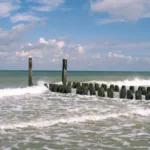Water quality analysis is essential to a variety of industries and individuals. It enables businesses to stay in compliance with regulations, and helps citizens avoid fines and penalties.
In order to monitor water quality, a number of techniques are used, including laboratory tests and a water quality meter (WQM). PortAqua is an affordable, portable two-parameter WQM that measures pH and conductivity with easy-to-find electronic components.
Pools
Pools are a major source of contaminants, and maintaining water quality is essential for the safety of swimmers and equipment. Testing water regularly for chlorine, pH and salt helps keep pools in safe, clean and clear condition, avoiding unpleasant or dangerous conditions that might cause damage to your facility.
Test strips and liquid test kits are available, but they’re less accurate than digital water testers. The latter’s electronic display clearly indicates the exact measurements and eliminates the subjective interpretation of color-coded results.
Ice factories
Ice is produced in ice factories, where water is processed to make ice in a variety of ways. The most common methods involve a combination of mechanical and chemical means, but the process of making ice involves several steps.
Cold water flows into a tall tube, which is lined with a pipe that contains a liquid ammonia refrigerant that freezes the water. As the water reaches the freezing point, it is pushed out of the tube through a shaft that rotates a gear attached to the tube.
The water then drops into a bin, which has been lined with a grid of wires. As it reaches the freezing point, it falls out of the bin and is broken into smaller cubes that are placed into storage containers.
The quality of ice depends on the cleanliness and hygiene of its production and storage facilities. The sanitary condition of ice machines and the handling practices of ice workers are also important factors.
Water treatment plants
Water treatment plants are the first step in ensuring clean, safe drinking water. Once your wastewater reaches the treatment plant, it undergoes multiple processes to ensure that it is safe to drink.
The first process that wastewater goes through is screening. This removes large floating debris that can clog pipes and cause equipment problems.
Next, it enters a grit chamber where cinders, sand and small stones settle to the bottom. This makes it easier to remove later.
Once the screening and grit removal process is complete, water passes through a chemical disinfectant (such as chlorine, chloramine or chlorine dioxide) to kill germs and parasites that may remain in the water. This chemical disinfectant also helps keep water safe as it moves from the treatment plant to your tap.
Water treatment plants can also use specialized methods to control or remove radionuclides, specific chemicals, or toxins in the water supply. These may include nitrate and phosphorus controls or filtration beds.
Water supply
Water supply is the quantity and quality of water available to users. This is largely determined by physical distance, where water has to be transported (often on the heads or backs of children and women), and wealth.
water quality is directly related to the health of people, so water suppliers must strictly monitor and test the water quality before it is sold to users. They do so by sampling the water and testing it for pH, turbidity, dissolved oxygen, and other factors.
A portable water quality meter is an essential tool to ensure safe and clean water for consumption. It is easy to use and enables quick measurement of important water parameters like pH, EC, dissolved oxygen, COD, turbidity, ammonia nitrogen, residual chlorine, and others.






Comments closed.